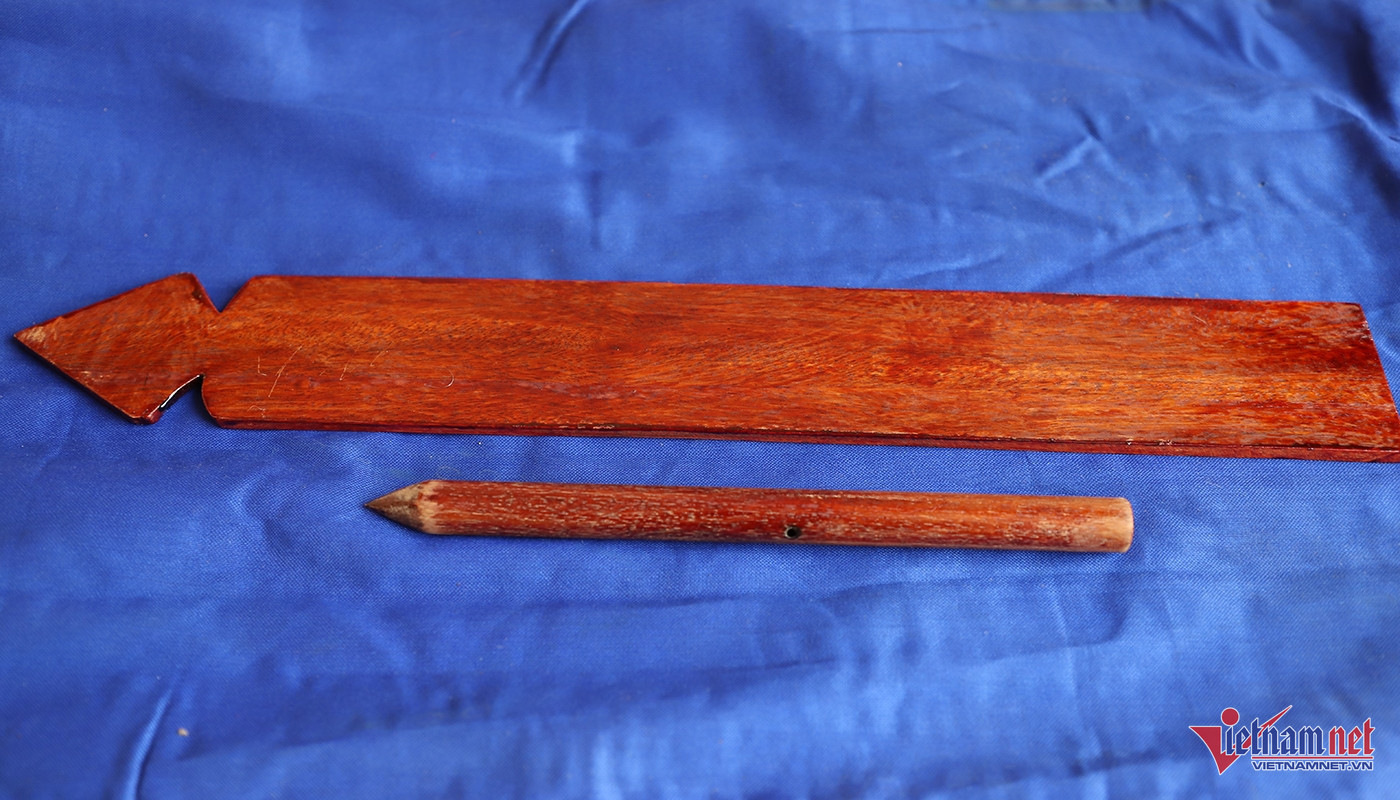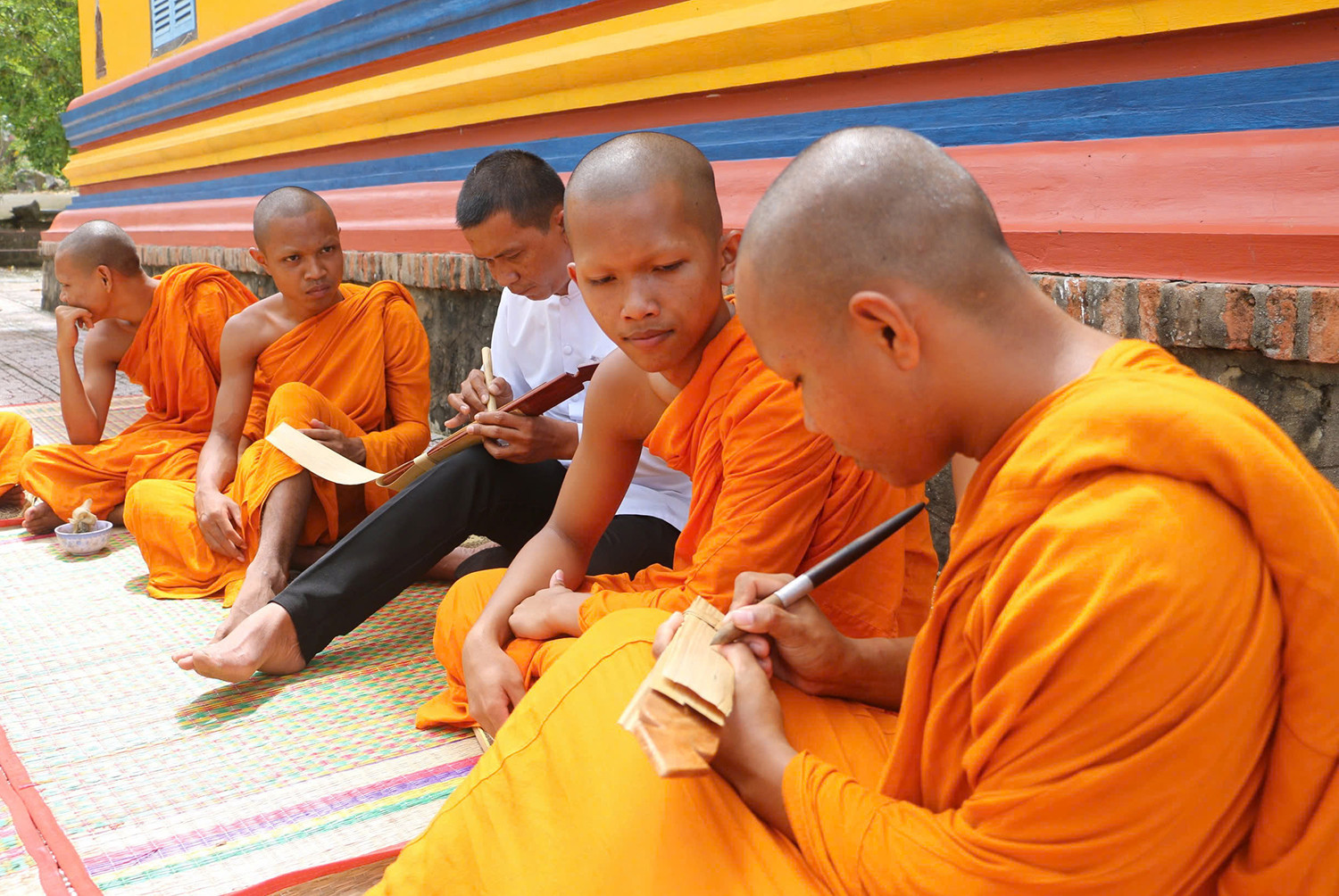Known as “kinh la buong” (palm leaf manuscripts), these inscriptions have been recognized as a national intangible cultural heritage by Vietnam’s Ministry of Culture, Sports and Tourism since 2017. They reflect the Khmer people’s ingenuity, technical skill, and profound knowledge.
According to the An Giang Museum, over a hundred years ago, in an era when printing technology was limited, Khmer monks began transcribing Buddhist scriptures by hand onto dried palm leaves. Today, nearly 1,000 manuscripts are still preserved in Khmer pagodas across the province.
Sa Lon Pagoda in Luong Phi Commune, Tri Ton District, is renowned for maintaining the craft of writing on palm leaves. Venerable Chau Son Hy, the abbot of the pagoda, explained that the scriptures typically convey Buddhist teachings, encouraging people to live virtuously and mindfully.
“These sacred texts are only opened during major festivals such as Vesak (Buddha’s birthday), Kathina (robe offering ceremony), and Dolta (ancestor remembrance),” he said.
Beyond Buddhist doctrines, many manuscripts include traditional knowledge in literature, astrology, medicine, and stories about societal phenomena.
The Khmer people chose palm leaves because of their strength, durability, and ability to retain clear markings. The stylus used is cylindrical with a sharpened metal tip, often shaped from a sewing needle.
“After inscribing the letters, we rub black ink over the text, then wipe the leaf clean so the characters appear in contrast. The leaves are then pierced and bound into books. Some artisans also apply a thin coat of gold starch water to both sides of the leaf, enhancing its sheen and protecting it from insects and decay,” Venerable Chau Son Hy explained.
The inscription process is meticulous and labor-intensive. The thumb controls the stylus, and each character must be etched with consistent pressure to keep the text neat and aligned.
Most of these manuscripts are kept in pagodas using simple preservation methods such as wrapping them in cloth or storing them in glass cabinets. Having survived through many generations, they are regarded as cultural treasures of the Khmer people in An Giang.
To protect this endangered heritage, in 2021 the An Giang provincial government approved a long-term conservation project titled “Preserving and Promoting the Knowledge and Techniques of Khmer Palm Leaf Script in An Giang to 2030.”
The project aims to systematically inventory and categorize the manuscripts, provide guidance on restoration and preservation, and digitize the knowledge and techniques involved in palm-leaf script.
It also seeks to promote the value of the heritage by producing copies of rare manuscripts for educational purposes, translating selected texts for research and outreach, and integrating this cultural tradition into tourism and public awareness campaigns.

 |
 |

